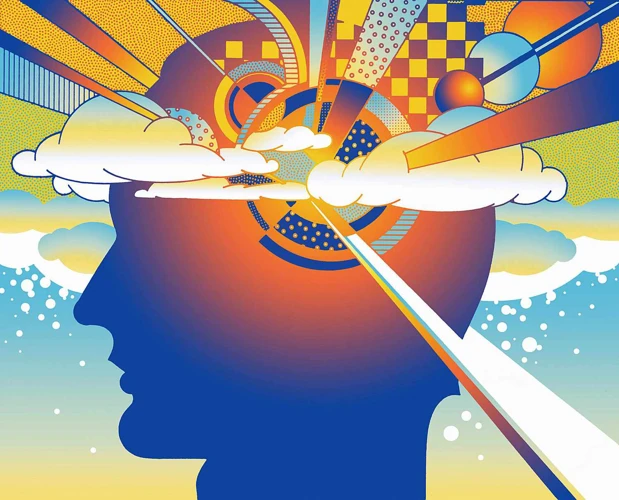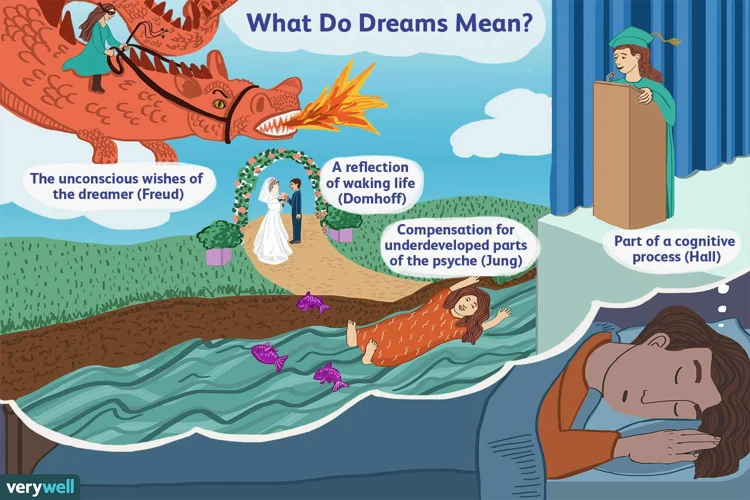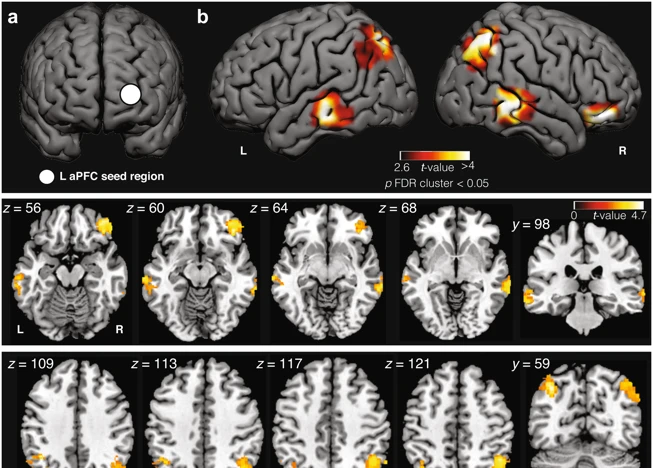Unlocking the Mystery: The Significance of Objects in Lucid Dreaming
In the captivating realm of lucid dreaming, objects hold a profound significance that can be both intriguing and perplexing. Dreams are a mysterious landscape where the mind can wander uninhibited, and objects within these dreams act as gateways to new dimensions of understanding. The power of objects in lucid dreaming lies in their ability to represent personal symbolism, universal archetypes, and even tap into the depths of the collective unconscious. By exploring and interacting with dream objects, one can enhance their lucidity and gain valuable insights into their inner world. So, let us embark on a journey to unravel the secrets behind these dream objects and delve into the extraordinary landscapes of the dream world.
The Power of Objects

Objects hold a profound power within the realm of lucid dreaming. They act as conduits for exploration and self-discovery, allowing dreamers to unlock hidden meanings and tap into the depths of their subconscious mind. Each object encountered in a dream has the potential to carry personal symbolism or represent universal archetypes. When exploring the power of objects in lucid dreaming, it is essential to recognize the significance they hold within the dreamer’s own experiences and beliefs. This personal symbolism can vary greatly from one individual to another, as it is influenced by unique life experiences, cultural background, and personal associations. For example, a key might represent unlocking potential or the unknown for one dreamer, while for another, it could symbolize access to forbidden knowledge or secrets. Objects in dreams can also tap into universal archetypes, which are common symbolisms shared by people across different cultures and time periods. These archetypes, such as the wise old man or the nurturing mother, carry collective meanings that evoke deep emotions and insights. By analyzing and interpreting the symbolism of dream objects, dreamers can gain a better understanding of their own psyche and unravel the hidden messages their dreams hold.
Understanding Symbolism

Understanding the symbolism behind objects in lucid dreaming is a key to unlocking the deeper meanings embedded within our subconscious mind. Symbolism can be examined through various lenses, including personal symbolism, universal archetypes, and the collective unconscious. Personal symbolism refers to the unique meanings attributed to objects based on an individual’s life experiences and associations. Each person may interpret an object differently, and understanding the personal significance allows for a deeper exploration of the self. On the other hand, universal archetypes represent shared symbolisms that evoke emotions and insights across cultures and time periods. These archetypes, such as the hero or the trickster, provide a common understanding of certain objects and their inherent meanings. Lastly, the collective unconscious, as proposed by Carl Jung, suggests that there are deeper layers of symbolism that are shared by all humans, originating from our common history and experiences. By examining and decoding the symbolism present in our dreams, we can gain valuable insights into our subconscious mind and uncover hidden aspects of ourselves. Dream analysis of objects can provide a valuable framework for deciphering these symbols and understanding their significance in our dreams.
1. Personal Symbolism
1. Personal Symbolism
In the realm of lucid dreaming, personal symbolism plays a significant role in the interpretation and understanding of dream objects. Each individual brings their unique perspectives, memories, and emotions into their dreams, which in turn influences the symbolism attached to objects. Personal symbolism can be deeply rooted in specific life experiences, relationships, or even cultural influences. For example, an individual who has a fear of spiders may encounter a spider in their dream, representing their fear or anxiety. Similarly, an object such as a watch might symbolize the passing of time or the need to be more mindful for someone who leads a busy and hectic lifestyle. The meanings attached to these objects are highly subjective and can vary from person to person. To interpret personal symbolism effectively, it is important for dreamers to reflect on their own experiences and associations with certain objects. Keeping a dream journal can be immensely helpful in identifying patterns and recurring symbols, allowing for a deeper understanding of personal symbolism within the context of lucid dreaming. By recognizing and decoding personal symbolism, dreamers can gain valuable insights into their subconscious mind and uncover hidden aspects of their psyche.
/interpreting-symbolic-meaning-objects-nightmares/
2. Universal Archetypes
Universal archetypes play a significant role in the power of objects within lucid dreaming. These archetypal symbols are deeply ingrained in the human collective unconscious and are shared across cultures and time periods. They represent fundamental aspects of the human experience and evoke strong emotional responses. In the realm of dreams, universal archetypes can manifest through various objects, each carrying its own symbolic meaning. For instance, the symbol of a snake can represent transformation, renewal, or even temptation. The image of a bridge may signify a transition or connection between different states of consciousness or realities. These archetypal objects hold a potent energy that resonates with the dreamer on a subconscious level, offering profound insights and revelations. By analyzing and understanding the universal archetypes present in dream objects, individuals can gain deeper awareness of their own personal journeys and the human collective consciousness as a whole. Decoding these archetypes can provide key insights into the meaning and purpose of the dream experience, guiding individuals towards self-discovery and personal growth. To further explore the fascinating world of dream symbolism, you can delve into the art of decoding colors in dreams, as colors also hold significant meanings within the dream realm.
3. Collective Unconscious
The concept of the collective unconscious, as proposed by renowned psychologist Carl Jung, plays a crucial role in understanding the power of objects in lucid dreaming. According to Jung, the collective unconscious refers to a deep-seated reservoir of shared experiences, emotions, and symbols that are inherited from our ancestral past. Within this collective unconscious, there exist archetypal images and themes that are embedded in our psyche, often appearing in our dreams as well. Dream objects provide a direct access point to this collective unconscious, serving as bridges between our individual conscious minds and the knowledge and wisdom of humanity as a whole. Through dream objects, we can tap into the universal symbolic language that resides within us all. The collective unconscious influences our dreams, presenting us with objects that carry profound meanings and insights beyond our personal experiences. These objects can take the form of ancient artifacts, mythological symbols, or even recurring symbols that have appeared in human culture throughout history. By exploring and decoding dream objects within the context of the collective unconscious, dreamers can uncover deep layers of wisdom and expand their understanding of themselves and the world around them. Understanding the power of the collective unconscious allows us to appreciate the richness and complexity of dream objects, as they become gateways to the shared human experiences and the depths of our collective wisdom.
To delve deeper into the symbolic meanings of objects in dreams, you can explore our article on decoding colors in dreams.
Interacting with Dream Objects

When it comes to lucid dreaming, interacting with dream objects is a crucial aspect of enhancing one’s experience and gaining deeper insights. One way to engage with dream objects is through reality checks. These checks involve questioning the nature of the environment and the objects within it to determine if one is dreaming or in wakeful reality. By regularly performing reality checks during waking hours, such as examining the consistency of text or attempting to fly, individuals can train their minds to question the reality of objects in dreams as well. Another method of interacting with dream objects is by employing object-focused techniques. This involves intentionally directing attention towards specific objects within the dream and consciously engaging with them. For example, a dreamer may choose to pick up and examine an object, allowing their senses to fully experience its texture, weight, and even smell. This heightened level of interaction can increase lucidity and create a more vivid and memorable dream experience. Additionally, enhancing lucidity during interactions with dream objects can be facilitated through the use of techniques like stabilization, which involves focusing on sensory details to maintain focus and prevent the dream from fading. By actively engaging with dream objects and utilizing techniques aimed at increasing lucidity, dreamers can unlock the full potential of their dream world and embark on incredible adventures of self-discovery and exploration.
1. Reality Checks
Reality checks play a crucial role in enhancing lucidity during a dream. When one is engaged in a dream, the lines between reality and the dream world can become blurred. By incorporating reality checks into their lucid dreaming practice, individuals can establish a habit of questioning their surroundings and discerning whether they are awake or dreaming. One commonly used reality check involves examining the state of objects within the dream. Dreamers can observe how objects behave and interact with them consciously. For example, attempting to push a finger through the palm of the hand or observing how objects respond to different actions can provide important clues about the dream state. Another reality check technique involves looking closely at objects for any inconsistencies or peculiarities. In dreams, objects may appear distorted, changed, or defy the laws of physics. By training themselves to be vigilant about the state of objects within dreams, individuals can begin to recognize the dream state more easily and achieve heightened lucidity. While reality checks alone may not guarantee lucidity, they serve as valuable tools for training the mind to question reality, paving the way for more conscious and interactive experiences in the dream world.
2. Object-Focused Techniques
2. Object-Focused Techniques
When it comes to engaging with dream objects in lucid dreams, there are various techniques that focus specifically on interacting and exploring the power that these objects hold. Let’s delve into three effective object-focused techniques:
1. Reality Checks: Reality checks are a commonly used technique in lucid dreaming to determine whether you are dreaming or in the waking world. This technique involves using an object as a point of reference to question your reality. For instance, you might try pushing your finger through the palm of your hand, expecting it to pass through if you are in a dream. By regularly performing reality checks with objects, you train your mind to question reality in dreams, leading to increased lucidity and control.
2. Object Manipulation: Object manipulation involves actively interacting with dream objects to explore their properties and potential. This can include experimenting with the physical characteristics of objects, such as their shape, texture, or weight. For example, you may try morphing a small stone into a giant boulder or changing the color of a flower. By consciously manipulating objects in your dreams, you not only enhance your sense of control but also deepen your connection to the dream world, allowing for unique experiences and insights to unfold.
3. Object Integration: Object integration focuses on incorporating dream objects into your lucid dream narrative. Instead of merely observing or manipulating objects, you actively engage with them in a meaningful way. For example, you might use a key to unlock a hidden door, revealing a new realm within the dream. This technique allows for the exploration of symbolism and the creation of personalized meaning within the dream experience. By integrating dream objects into your narrative, you can unlock deeper layers of understanding and potentially receive guidance or important messages.
By employing these object-focused techniques, lucid dreamers can harness the power of dream objects to enhance their lucidity, gain insights, and embark on transformative journeys within the dream world. It is through these intentional interactions with objects that the boundaries of what is possible in the dream realm can be pushed, unlocking new levels of self-discovery and exploration.
3. Enhancing Lucidity
Enhancing Lucidity
3. Enhancing lucidity in lucid dreaming is a crucial aspect of fully experiencing and interacting with dream objects. When dreamers become aware that they are in a dream, they can take intentional steps to increase their level of lucidity and control over the dream environment. One effective technique is to use reality checks. Reality checks involve performing simple actions or observations within the dream to determine if one is in a dream state. Some common reality checks include attempting to push a finger through the palm of the hand, looking at a clock or text and then looking away and looking back to see if it has changed, or attempting to levitate. By incorporating reality checks into their daily routine, dreamers can train their awareness to carry over into their dream state, increasing the likelihood of recognizing the dream as a dream.
Another technique for enhancing lucidity is to focus on dream objects themselves. By placing attention on objects within the dream, dreamers can deepen their engagement with the dream and increase lucidity. They can examine objects closely, paying attention to details such as texture, color, and shape. They can also interact with objects, using all of their senses to fully immerse themselves in the dream experience. By intensifying their focus on dream objects, dreamers not only enhance their level of lucidity but also amplify their connection to the dream environment.
In addition to reality checks and object-focused techniques, there are various other methods for enhancing lucidity in lucid dreaming. These include maintaining a dream journal to record and reflect on dreams, practicing mindfulness and meditation, and incorporating supplements or lucid dreaming aids. Consistent practice and experimentation with different techniques can help dreamers develop their ability to stay conscious and aware within their dreams, allowing for deeper exploration and interaction with dream objects. By enhancing lucidity, dreamers can unlock the true potential of their lucid dreams and uncover the profound significance of the objects they encounter within this fascinating realm.
Exploring the Dream World
In the magical realm of lucid dreaming, exploring the dream world is an exhilarating adventure that unveils endless possibilities. Within this realm, dream objects take on transformative qualities, allowing dreamers to experience incredible shifts and manifestations. One fascinating aspect of exploring the dream world is encountering transformational objects. These objects have the power to change shape, form, or function, blurring the boundaries between reality and imagination. They can create a sense of wonder and awe as dreamers witness the extraordinary possibilities that exist within their own minds. Additionally, dream objects can serve as gateways to new realities. They can act as portals, transporting dreamers to different dimensions and alternate versions of reality. This transcendental exploration allows individuals to experience new environments, encounter different beings, and gain unique perspectives. Dream objects can offer communication and guidance. They can serve as conduits for messages from the subconscious mind, providing insights, wisdom, and guidance to the dreamer. Whether it’s a mystical book containing hidden knowledge or a wise mentor guiding the way, dream objects facilitate a deeper connection with one’s intuition and inner wisdom. The dream world becomes a realm of discovery, where dreamers can unlock their fullest potential and embrace the extraordinary possibilities that reside within their dreams.
1. Transformational Objects
Transformational objects in lucid dreaming are a fascinating aspect of the dream world. These objects have the ability to change and transform, adding an element of wonder and exploration to the dream experience. They can take on various forms, from simple everyday objects to fantastical and surreal creations. One type of transformational object is the “dream key,” which holds the power to unlock new areas or abilities within the dream. Finding or using this key can lead to transformative experiences, such as gaining access to hidden knowledge or unlocking personal potential. Another example is the “dream mirror,” which reflects the dreamer’s true self or reveals hidden aspects of their personality. By gazing into the dream mirror, individuals can gain deep insights and self-awareness. The dream world is full of limitless possibilities, and transformational objects serve as catalysts for personal growth and self-transformation. These objects challenge the dreamer to embrace change and explore new dimensions of their consciousness. The power of transformational objects lies in their ability to ignite curiosity, inspire creativity, and push the boundaries of what is perceived as possible. Through encountering and interacting with these objects, dreamers can undergo profound changes and emerge from their dreams with newfound perspectives and insights. It is through the exploration of transformational objects that the true magic of lucid dreaming comes to life.
2. Gateways to New Realities
Dream objects can serve as powerful gateways to new realities within the lucid dream world. When dreamers encounter certain objects, they may find themselves transported to different dimensions or alternate versions of reality. These objects act as portals, offering opportunities to explore unfamiliar landscapes, engage in unique experiences, and access hidden knowledge. For example, a mysterious mirror might serve as a gateway to a parallel universe, where the dreamer can engage with alternate versions of themselves or interact with entirely different environments. Similarly, a mystical door could lead to an enchanted realm filled with fantastical creatures and magical landscapes. These gateways offer the dreamer a chance to step outside the boundaries of ordinary reality and embark on extraordinary adventures. By consciously interacting with these dream objects and intentionally entering these gateways, lucid dreamers can expand their understanding of the dream world and access new realms of consciousness. It is through these gateways that the true vastness and limitless potential of the lucid dream world can be explored and experienced.
3. Communication and Guidance
Communication and guidance are two significant aspects of interacting with dream objects in lucid dreaming. In the dream world, objects have the potential to communicate with the dreamer and offer guidance or insights that may be inaccessible in waking life. Dream objects can take on the role of messengers, providing information, advice, or warnings through symbolic representations. These messages can be conveyed through direct communication with the object itself or through subtle cues and synchronicities within the dream. The dreamer may engage in conversations, receive written messages, or even experience telepathic exchanges with the objects present in their lucid dream. This form of communication can be a powerful tool for self-discovery, problem-solving, and spiritual growth. Dream objects can serve as guides, leading the dreamer to new realms, experiences, or understandings. They may act as doorways or portals to different dimensions of the dream world, inviting exploration and discovery. By interacting and engaging with dream objects, dreamers can seek guidance in their lucid dreams, asking questions, and receiving answers that can aid in personal transformation and decision-making. It is important for dreamers to develop a sense of receptivity and openness to the messages and guidance that dream objects provide, as they may hold profound wisdom and insights that can positively impact waking life. Through communication and guidance offered by dream objects, the journey of lucid dreaming becomes a dynamic and transformative experience.
Conclusion
In conclusion, the power of objects in lucid dreaming is undeniable. These dream objects serve as gateways to self-discovery, offering glimpses into the subconscious mind and the vast depths of the collective unconscious. By understanding the personal symbolism and universal archetypes associated with dream objects, dreamers can unlock a wealth of knowledge and insight about themselves and the world around them. Interacting with dream objects through reality checks and object-focused techniques can enhance the lucidity of dreams and open up new possibilities for exploration. The dream world becomes a canvas for transformation, a realm where objects can shape-shift and act as portals to new realities. Additionally, dream objects can serve as guides and messengers, offering communication and guidance from the depths of the subconscious. As we delve into the mysteries of lucid dreaming and unlock the significance of objects within our dreams, we embark on a journey of self-discovery, creativity, and limitless exploration. So, embrace the power of objects in your dreams and unlock the endless possibilities that unfold within the realm of lucidity.
Frequently Asked Questions
1. How do objects in lucid dreams differ from regular dreams?
In lucid dreams, objects have an enhanced significance as they can be consciously interacted with and manipulated. Unlike regular dreams where objects may passively appear or disappear, lucid dreamers have the ability to engage with objects, examine them, and even reshape them according to their will.
2. Can objects in lucid dreams have different meanings for different individuals?
Absolutely! Objects in lucid dreams often carry personal symbolism that is unique to each individual. A particular object may represent different emotions, experiences, or concepts based on an individual’s personal associations and beliefs. It is important to explore and interpret the meaning of objects within the context of the dreamer’s own experiences.
3. Are dream objects purely symbolic or do they have a tangible impact?
In the world of lucid dreaming, dream objects can have both symbolic and tangible effects. While they may symbolize deeper meanings or represent certain aspects of the dreamer’s psyche, objects can also have real-world consequences within the dream. Interacting with objects can trigger emotional responses, influence the dream environment, and even lead to transformative experiences.
4. How can one identify personal symbolism in dream objects?
Identifying personal symbolism in dream objects requires reflection and introspection. One can start by keeping a dream journal and noting recurring objects or themes. Exploring the emotional responses and personal associations tied to these objects can provide valuable insights into their symbolic meanings.
5. Can analyzing dream objects help in understanding waking life experiences?
Yes, analyzing dream objects can offer a deeper understanding of waking life experiences. Dreams often reflect the subconscious mind’s processing of daily events and emotions. By studying the symbolism and interactions with dream objects, one can gain valuable insights, uncover unresolved emotions, and find new perspectives on waking life situations.
6. Are there any techniques to enhance lucidity while interacting with dream objects?
Yes, there are various techniques to enhance lucidity when interacting with dream objects. Reality checks, such as looking at a written text or checking the time, can help determine if one is dreaming. Object-focused techniques, like consciously engaging with specific objects or setting intentions to encounter certain objects in dreams, can also enhance lucidity.
7. Can dream objects serve as gateways to entering new dream realities?
Absolutely! Dream objects can act as gateways to new dream realities or even facilitate lucid dream transitions. By interacting with certain objects, such as doorways or mirrors, dreamers can enter alternate dream dimensions or travel to different locations within the dream world.
8. How can dream objects be used for communication and guidance?
Dream objects can be vehicles for communication and guidance within the dream world. Dreamers can ask objects for guidance or clarity, be it through speaking to them or employing telepathic communication. Objects may provide answers, insights, or symbolic messages that can help the dreamer navigate their waking life challenges.
9. Are there any objects commonly encountered in lucid dreams that have universal symbolism?
Yes, certain objects in lucid dreams hold universal symbolic meanings. For example, clocks often represent the passing of time or a sense of urgency. Mirrors can symbolize self-reflection or self-perception. Understanding these universal symbolisms can aid in deciphering the messages and meanings behind dream objects.
10. Can the colors of dream objects have significant meanings?
Yes, the colors of dream objects can have significant meanings. Just like in waking life, colors in dreams can evoke emotions and convey symbolic representations. For example, the color red might signify passion or anger, while blue can represent tranquility or sadness. Analyzing the colors of dream objects can provide additional layers of insight into their symbolism.








